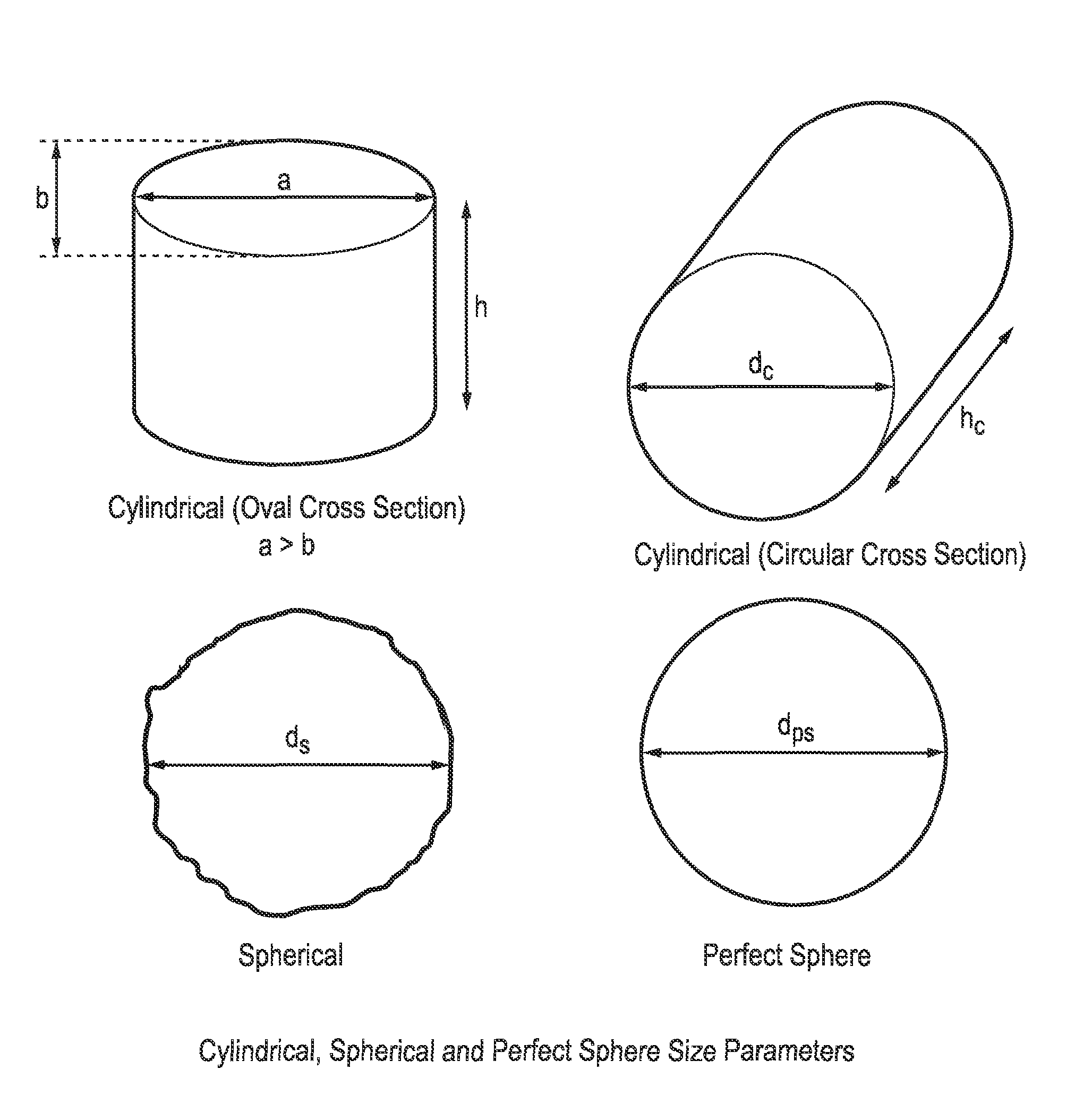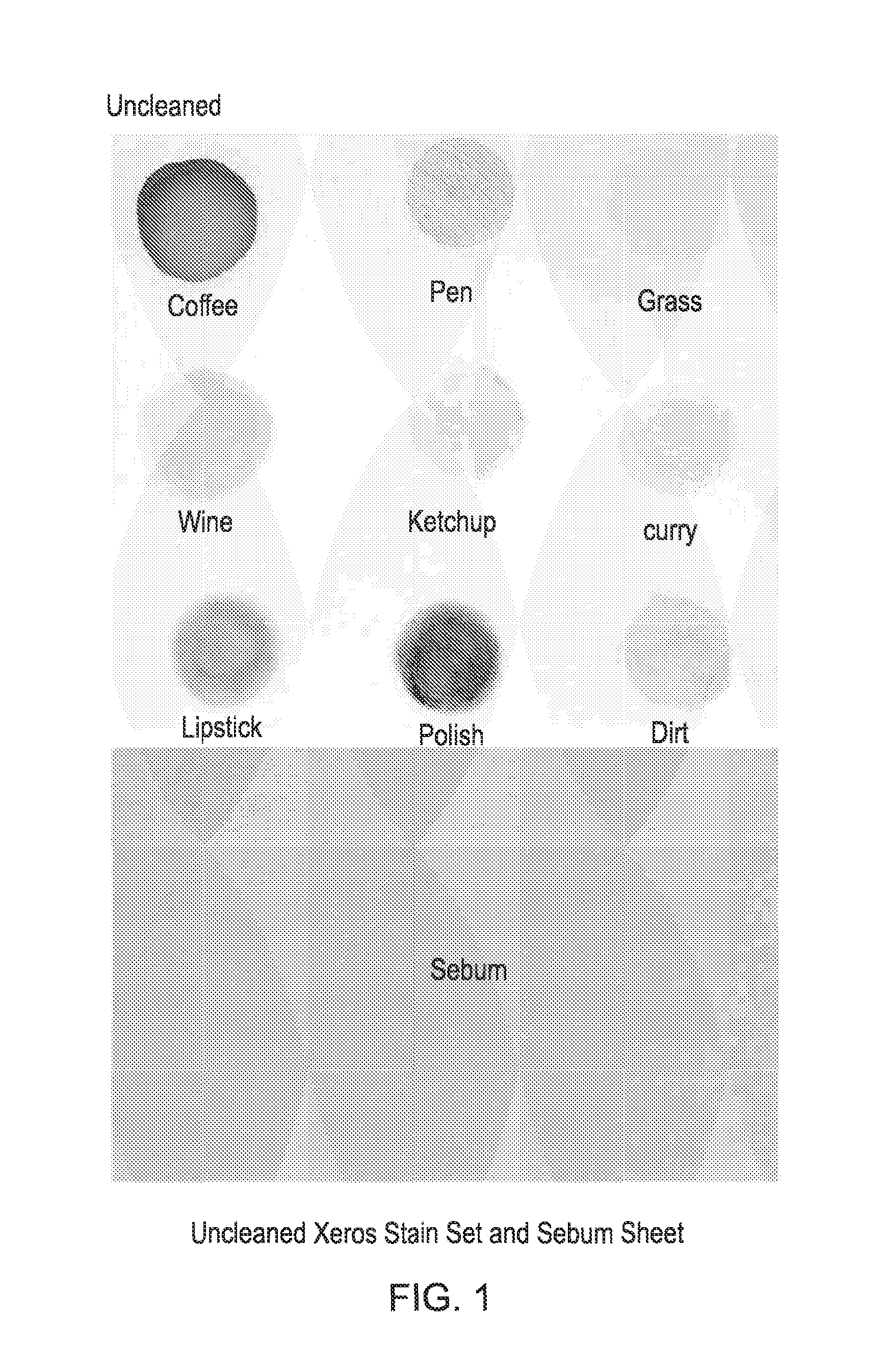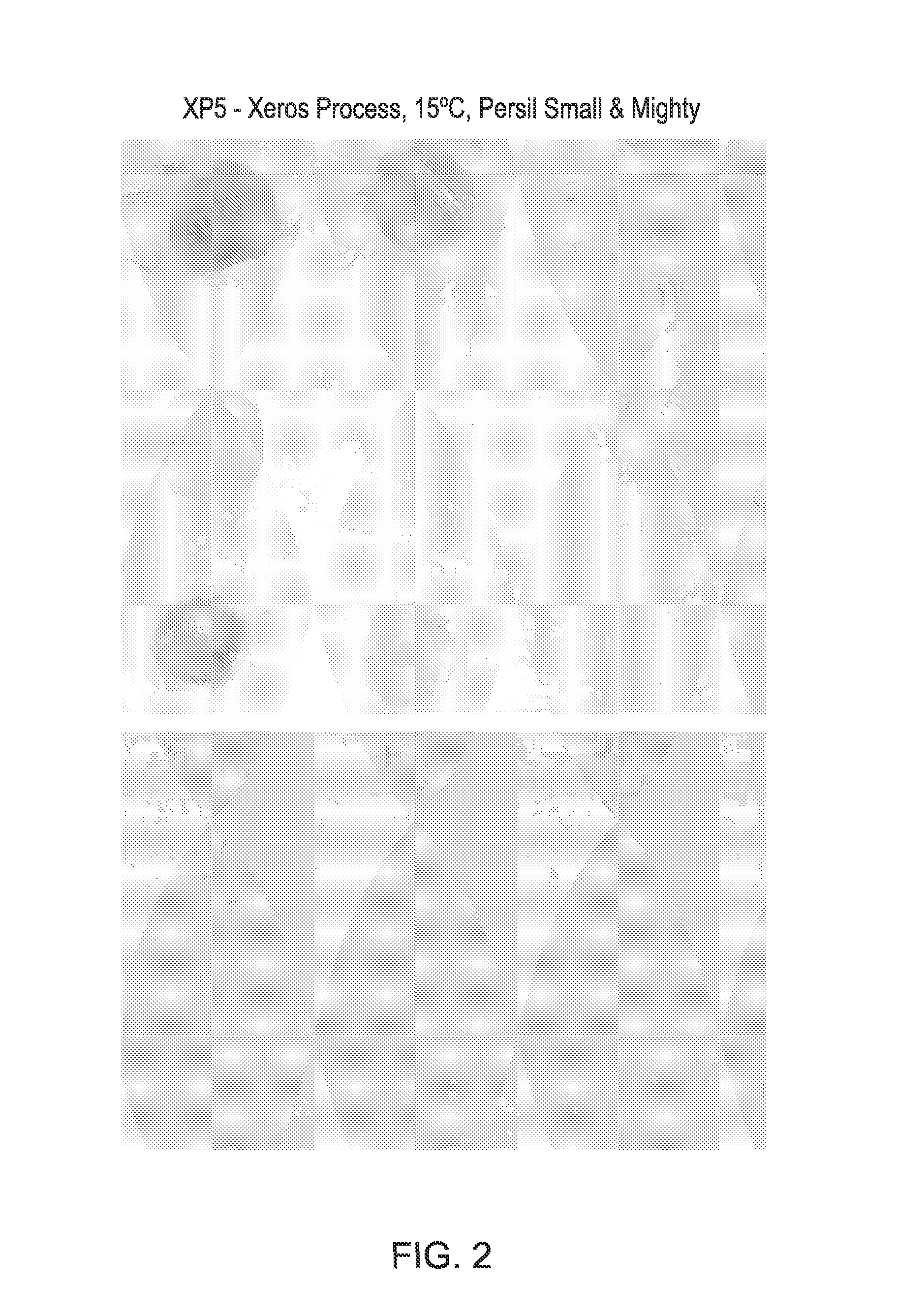Cleaning Method
a cleaning method and cleaning technology, applied in the field of aqueous cleaning, can solve the problems of general cost, and achieve the effects of reducing the level of detergents, excellent cleaning performance, and low cleaning temperatur
- Summary
- Abstract
- Description
- Claims
- Application Information
AI Technical Summary
Benefits of technology
Problems solved by technology
Method used
Image
Examples
example 1
Cleaning Performance
[0127]Woven cotton fabric (194 gm−2, Whaleys, Bradford, U.K.) was stained with coffee, lipstick, ball point pen, tomato ketchup, boot polish, grass, vacuum dirt, curry sauce and red wine following the methods described below:
[0128](i) Coffee
[0129]10 g of Morrisons® Full Roast coffee powder was dissolved in 50 ml distilled water at 70° C. A 1 cm3 aliquot of the ensuing solution was applied to the fabric using a synthetic sponge, within the confines of a 5 cm diameter circular plastic template; the stained fabric was then allowed to dry at ambient temperature (23° C.), after which the fabric was aged prior to use, by storage in the dark for 4 days.
[0130](ii) Lipstick
[0131]Revlon® Super Lustrous lipstick (copper frost shade) was applied to the fabric using a synthetic sponge to provide a uniform coverage within the confines of a 5 cm diameter circular plastic template. The fabric was then aged following the procedure recounted for coffee.
[0132](iii) Ball Point Pen
[0...
example 2
Fabric Care
[0156]Tests were carried out in order to illustrate the reduced localised fabric damage associated with the method of the present invention. Thus, FIGS. 8 and 9 show the result of washing a specially manufactured cloth sample (EMPA #306 test cloth: “Polka-Dot Type A (low-mid)), which is designed to highlight the effects of mechanical action in the washing process. FIG. 8 is a sample of this cloth after a wash in a preferred apparatus as hereinbefore defined according to the method of the invention, and FIG. 9 is a sample of this cloth after a wash in a conventional domestic washing machine.
[0157]The domestic wash was carried out in a BEKO WM5120W machine, on a 40° C. cotton wash cycle at a 1200 rpm spin speed setting, using 4 kg of cotton ballast and 1 EMPA #306 cloth. The detergent used was 80 g of Procter & Gamble Ariel® biological powder (i.e. 20 g / kg) which is the manufacturer's recommended dosage. The process according to the invention was carried out in a preferred ...
example 3
Cleaning Performance
[0160]Energy, water and detergent consumption values were determined for the method of the presently claimed invention when using the preferred apparatus (98 cm diameter cage) and compared with values achieved with a Miele PW 6241 EL commercial machine. The results are shown in Table 3. The Miele PW 6241 EL conventional tests were carried out with 12 kg washloads, even though this machine is rated as a 24 kg machine. This was again to make these controls more rigorous, as the increased free volume in the drum results in more mechanical action, and a better wash performance. The detergent used was Procter & Gamble Professional Ariel® Liquid at the manufacturer's recommended dosage of 30 ml / kg. Wash temperatures of 40° C. and 60° C. were used (controls ML1 and ML2 respectively). The washload contained 3 professional commercial laundry stain monitors (PCMS-55—05-05×05 from WFK—see FIGS. 11(a) and 11(b)), 12 sebum cloths (SBL-2004 from WFK), with the remaining washlo...
PUM
| Property | Measurement | Unit |
|---|---|---|
| Temperature | aaaaa | aaaaa |
| Length | aaaaa | aaaaa |
| Length | aaaaa | aaaaa |
Abstract
Description
Claims
Application Information
 Login to View More
Login to View More - R&D
- Intellectual Property
- Life Sciences
- Materials
- Tech Scout
- Unparalleled Data Quality
- Higher Quality Content
- 60% Fewer Hallucinations
Browse by: Latest US Patents, China's latest patents, Technical Efficacy Thesaurus, Application Domain, Technology Topic, Popular Technical Reports.
© 2025 PatSnap. All rights reserved.Legal|Privacy policy|Modern Slavery Act Transparency Statement|Sitemap|About US| Contact US: help@patsnap.com



